African Mountain Trekking: Kilimanjaro & Other Peaks
High altitude trekking in East & Southern Africa is limited to a few special places.
Of course there are many spots where scenic trekking is possible, from the Drakensberg Mountains in South Africa to the Ngorongoro Highlands in Tanzania. However, in terms of more serious altitude trekking within the countries we specialise in, there are really just four challenging options to consider. These are Mount Kilimanjaro and nearby Mount Meru in northern Tanzania, the Rwenzori Mountains in western Uganda and Mount Kenya in central Kenya.
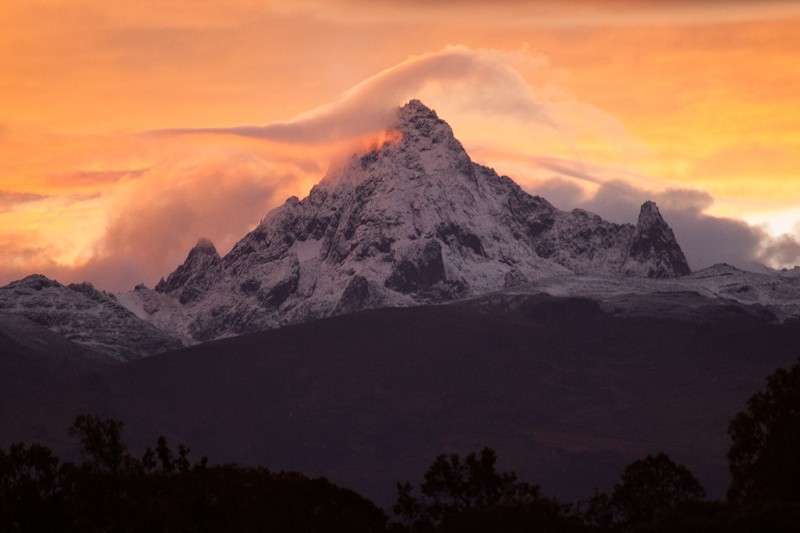


MOUNT KILIMANJARO TREKKING & CLIMBING
At 5895 metres above sea level (19,340 feet) Uhuru Peak on Mount Kilimanjaro is the highest point in Africa. Standing at Uhuru Peak, you are looking over the Kibo Crater to the interior side of the mountain, and the rapidly dwindling Kibo glacier on the exterior. It is a pretty unique scenario and a harsh, wild place to be.
The glacier falls away into the clouds – it is common for the top of Kilimanjaro to be bathed in sunlight whilst the base of the mountain is shrouded in cloud. Even on clear days you are too high to make out much definition on the landscapes below. Only Mount Meru stands proudly to the west, also rising above the clouds. Having enjoyed the moment and taken a few photos, most people then remember just how awful they feel, and start wondering how quickly they can get down off the mountain to enjoy a few well-earned comforts!
Kilimanjaro is an adventure and a challenge, and it is only beautiful in a ‘wild’ way. Not everyone who attempts to reach the top makes it, the prime reasons for failure being altitude sickness and exhaustion, often combined to some degree. The cold is a factor too, not just on the early morning ascent of the Kibo Dome, but each night on the mountain.
However, if you are happy to endure the physical challenge and cold temperatures, and you are able to cope with the altitude gain, then reaching the summit is a real achievement and the feeling of standing on the roof of a continent is worth all the effort.
HOW LONG DOES IT TAKE TO CLIMB THE KILIMANJARO?
Climbing Kilimanjaro will take between 5 and 8 days, depending on which route you take and whether you build in any rest days.
It is normal, and recommended, to spend a minimum of five or six nights on the mountain, depending on the route. You will also need a night either side at the base.
The climb itself does not require technical know-how, and you will not need to wear or use ropes, crampons or ice-axes. It is essentially a walk to the top, albeit a hard one. You will however need appropriate clothing – temperatures can fall well below freezing even before the winds blow and make it feel twice as cold.
KILIMANJARO TREK ROUTES
There are several routes up Kilimanjaro, and once you have decided to take on the mountain, your main decision will be which route to take.
ROUTE | MINIMUM NO. OF NIGHTS | RECOMMENDED NO. OF NIGHTS | ACCOMMODATION |
|---|---|---|---|
| Marangu | 4 | 5 | Huts |
| Rongai | 4 | 5 | Camping & Huts |
| Machame | 5 | 6 | Camping |
| Lemosho Glades | 6 | 7 | Camping |
The Marangu Route
The Marangu route is the standard route, approaching from the south-east of the mountain via Mandara, Horombo and Kibo huts. These are the only three stops on the way up, and they provide the only permanent accommodation on the mountain.
From Kibo Hut you climb to Gilman’s Point (approx. 5 – 6 hours) to see the sun rise and then it is an hour and a half (approx.) around the summit rim to Uhuru Peak.
Whilst you can climb this route with only 4 nights on the mountain (3 going up, 1 on the way back down) it is strongly recommended that you take a rest day at Horombo on the way up. This is crucial for acclimatization and for many people will make the difference between making the top or not. The Marangu route is functional and straight forward, and the cheapest route, but it is also by far the busiest and least exclusive.
The Machame Route
The Machame route is the route that many people choose as an alternative to the busier Marangu route.
The Machame route starts from the south-west side of the mountain and climbs north through the lower forests via Machame Camp to the Shira Plateau on the western flank of the mountain.
The route then contours eastwards around the south side of the Kibo Dome, via the Barranco Wall and Karanga Valley, before climbing to Barafu Hut at the foot of the Kibo Dome. This route not only includes some scenic sections of the mountain but also allows for excellent acclimatization between 3800 and 4600 metres. From Barafu you climb up to Stella Point for sun rise and then it is an hour or so around the summit rim to reach Uhuru Peak.
This route requires 6 nights on the mountain, though it is possible (but not recommended) to miss out the night at Karanga Valley. The Machame route is a longer, more interesting and more exclusive route than Marangu, offering better acclimatization, but there are no huts and camping is required.

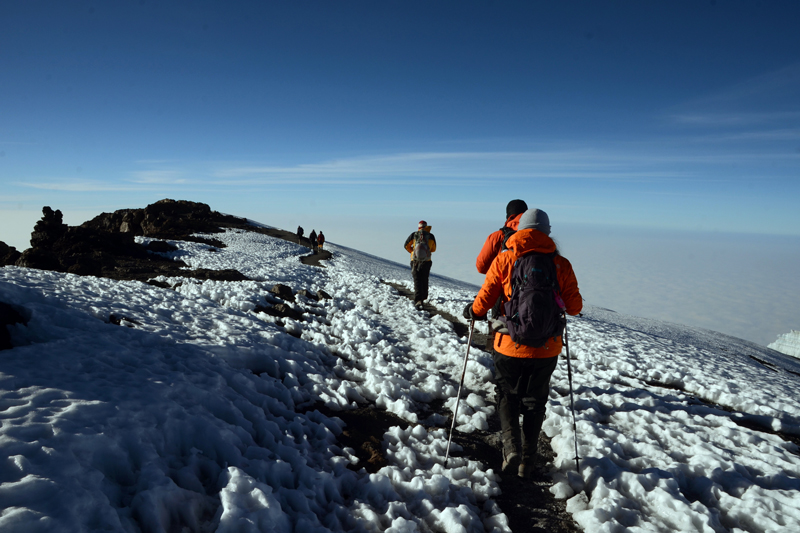
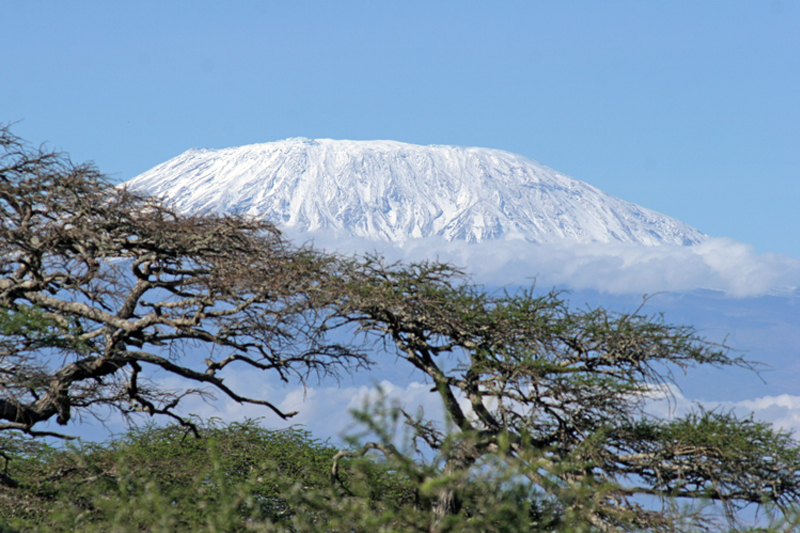
The Rongai Route
There are several variations or alternative starting points to either of the above routes. On the eastern side of the mountain, the Rongai route offers a similar but much quieter approach to Kibo Hut.
Coming from the north-east side of the mountain, the route has very few climbers until it joins the Marangu route at Kibo Hut. However a long drive around to the starting point is required and there are no huts so camping is necessary, making it a more expensive alternative to the Marangu route.
The Lemosho Glades Route
On the western side of the mountain, the Lemosho Glades route is known as a very exclusive route which climbs through the lower forests to reach the Shire Plateau and join the Machame Route. This route can also be known as the Shira route.
From the Shira plateau (so relevant for Shira, Lemosho Glades and Machame climbers) more adventurous climbers can ascend the Kibo Dome via the Western Breach. This is a section of the Kibo Dome which was blown away in ancient eruptions and provides the most direct route from the Shira plateau to Uhuru Peak.
This more direct ascent of the Kibo Dome is long and unrelenting (as you start the steep climb from a lower altitude), and less straightforward than climbing up to either Stella Point or Gilman’s Point in the east, and you need to camp at the top, actually inside the main Kibo crater. The following morning you have a short climb to Uhuru Peak.
The western breach route is known as a harder route that is only recommended for experienced trekkers who are comfortable camping at over 5000 metres. Occasionally conditions can dictate that the western breach is not safe to ascend.
Which route will suit you best will depend on your personal requirements and budget. We would generally suggest the Machame route as a good starting point, as it offers a more exclusive climb than Marangu with good acclimatization. However, even this route will seem busy in places as there simply are not many routes you can take to reach the top!
If you would like to speak to one of our specialists about climbing Mount Kilimanjaro, please call us on +44 (0) 1787 888590 or email us your requirements via our Contact Us page. To explore Tanzania and everything else it has to offer, please visit our Tanzania pages.
OTHER MOUNTAINS TO TREK IN AFRICA
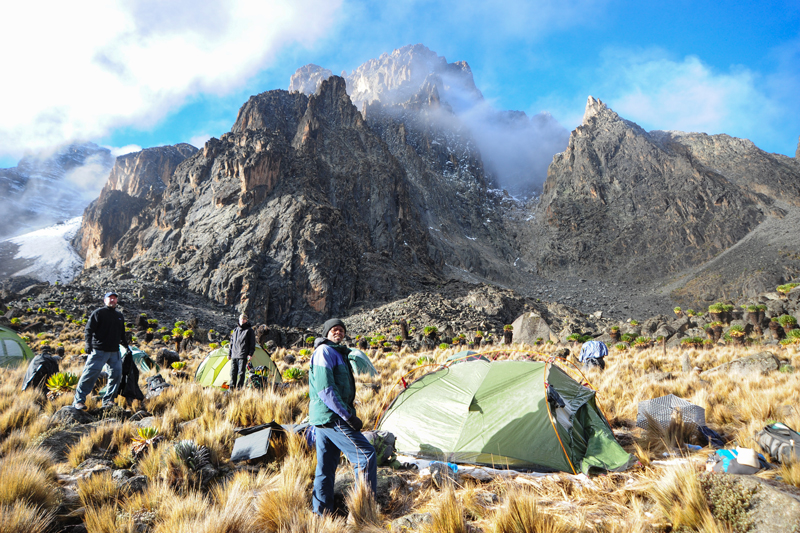
MOUNT KENYA
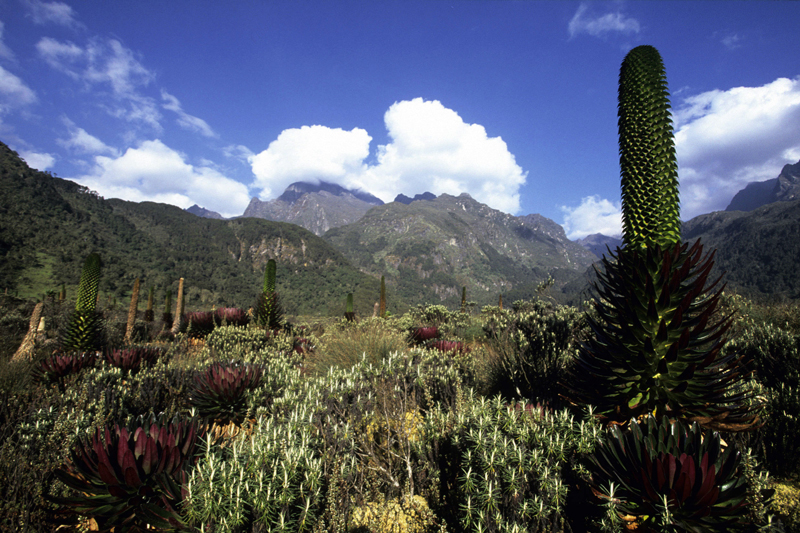
THE RWENZORI MOUNTAINS



